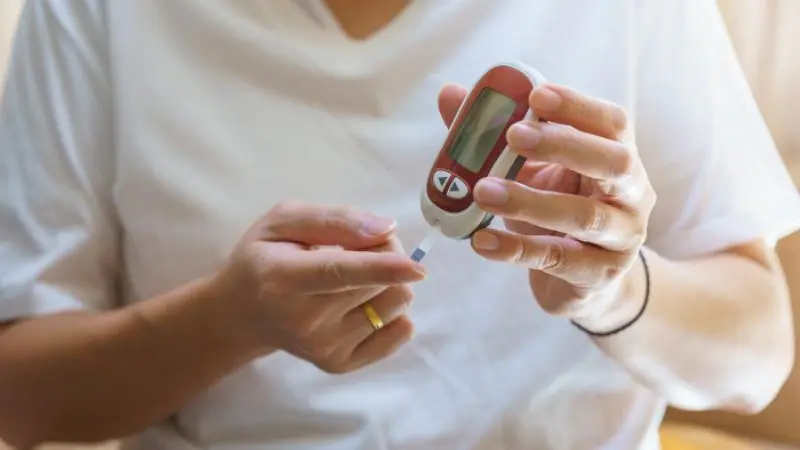A Comprehensive Guide to Diabetes Insipidus Treatment
Diabetes insipidus (DI) is a rare condition characterized by the kidneys’ inability to properly regulate fluid balance, resulting in excessive thirst and the excretion of large amounts of dilute urine. The treatment of diabetes insipidus aims to alleviate symptoms, maintain proper fluid balance, and prevent complications.
This article provides an overview of the various treatment options available for different forms of diabetes insipidus, including central diabetes insipidus, nephrogenic diabetes insipidus, gestational diabetes insipidus, and primary polydipsia.
1. Central Diabetes Insipidus (CDI) Treatment
The primary goal in treating central diabetes insipidus is to replace the deficient antidiuretic hormone (ADH), also known as vasopressin. Synthetic forms of ADH, such as desmopressin (DDAVP), are the mainstay of treatment for CDI. Treatment options include:
- Desmopressin Nasal Spray: Desmopressin is administered as a nasal spray, which delivers a synthetic form of ADH directly to the nasal membranes. This form of treatment helps regulate fluid balance by reducing urine output and alleviating excessive thirst. The dosage is usually adjusted based on individual response and can be taken multiple times a day.
- Desmopressin Tablets: In some cases, desmopressin is available in tablet form, which is taken orally. This form of administration can be more convenient for certain individuals.
- Desmopressin Injections: In severe cases or situations where oral or nasal administration is not feasible, desmopressin can be administered via injection. This form of treatment may be required in hospital settings or for specific medical circumstances.
Regular monitoring of urine output, fluid intake, and electrolyte levels is crucial to ensure proper dosing and adjust treatment as needed.
2. Nephrogenic Diabetes Insipidus (NDI) Treatment
The treatment of nephrogenic diabetes insipidus focuses on managing symptoms and maintaining proper fluid balance. NDI involves the kidneys’ inability to respond to ADH, so replacing the hormone is not effective. Treatment options for NDI include:
- Increased Fluid Intake: Individuals with NDI are advised to drink sufficient fluids to compensate for the excessive urine output. Adequate fluid intake is essential to prevent dehydration. A healthcare provider can provide guidance on the recommended daily fluid intake.
- Diuretics: In some cases, specific diuretic medications may be prescribed to reduce urine volume and increase water reabsorption in the kidneys. Thiazide diuretics, such as hydrochlorothiazide, are commonly used to treat NDI. These medications can help decrease urine output and improve symptoms.
- Dietary Modifications: Adjusting dietary sodium and potassium intake may be necessary to maintain electrolyte balance. A healthcare provider or dietitian can provide guidance on specific dietary modifications based on individual needs.
Regular monitoring of urine output, weight, and electrolyte levels is important to ensure the effectiveness of treatment and prevent complications.
3. Gestational Diabetes Insipidus (GDI) Treatment
Gestational diabetes insipidus is a rare form of diabetes insipidus that occurs during pregnancy. Treatment for GDI is typically focused on managing symptoms until delivery. The main treatment option for GDI is the use of desmopressin, which can help alleviate excessive thirst and reduce urine output. Treatment decisions during pregnancy require careful consideration, and healthcare providers will monitor the mother and baby closely.
4. Primary Polydipsia Treatment
Primary polydipsia, also known as dipsogenic diabetes insipidus, involves excessive fluid intake due to a defect or damage in the thirst mechanism in the hypothalamus. Treatment for primary polydipsia focuses on behavioral and lifestyle modifications, including:
- Fluid Restriction: Limiting fluid intake can help manage excessive thirst and reduce urine output. A healthcare provider or dietitian can provide guidance on appropriate fluid restrictions.
- Counseling and Behavioral Therapy: Working with a mental health professional can help address the underlying psychological factors that contribute to excessive fluid intake.
- Medication Adjustment: In some cases, adjusting or discontinuing medications that may contribute to excessive thirst can be beneficial.
Treatment for primary polydipsia may require a multidisciplinary approach involving healthcare providers, mental health professionals, and dietitians.
Conclusion
The treatment of diabetes insipidus depends on the specific form and underlying cause. Synthetic ADH replacement (desmopressin) is the mainstay of treatment for central diabetes insipidus, while management for nephrogenic diabetes insipidus focuses on fluid intake, diuretics, and dietary modifications.
Treatment for gestational diabetes insipidus is typically temporary and may involve desmopressin. Primary polydipsia requires behavioral and lifestyle modifications, such as fluid restriction and counseling.
Regular monitoring, proper hydration, and close collaboration with healthcare providers are essential for effective management and to prevent complications associated with diabetes insipidus.
